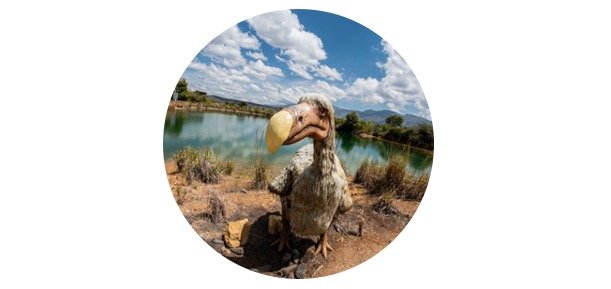Eastern Bluebird: Description, Types, Pictures, & Fun Facts
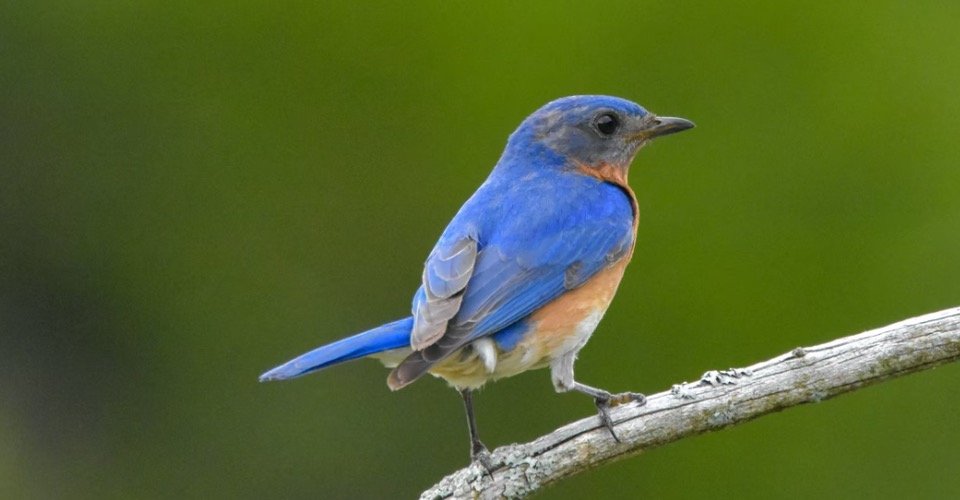
Table of Contents
Scientific Classification of Eastern Bluebird
- Kingdom: Animalia
- Phylum: Chordata
- Class: Aves
- Order: Passeriformes
- Family: Turdidae
- Genus: Sialia
- Scientific name: Sialia sialis
Location of Eastern Bluebird
- Central America
- North America
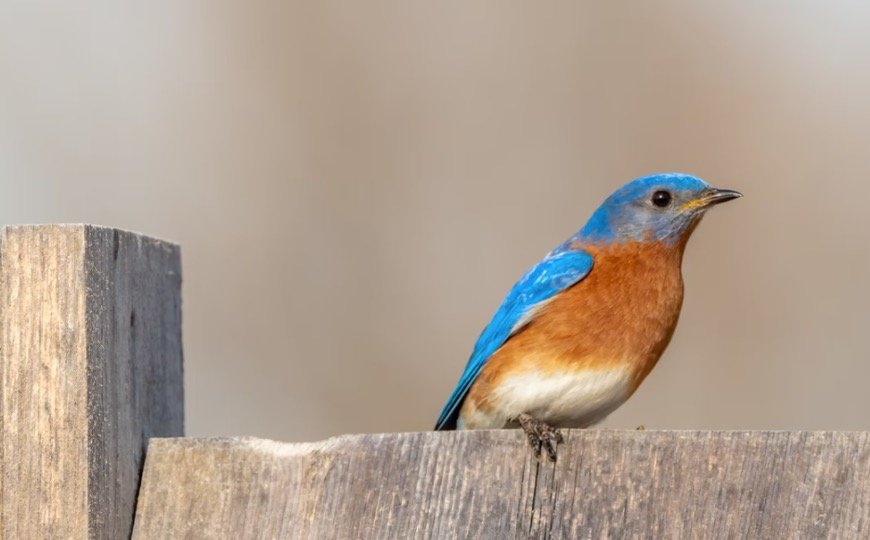
Eastern Bluebird Description
Eastern bluebirds are small and beautiful creatures. The birds are considered harbingers of spring in several places and the birds start singing in some places when snow is still on the ground. The population of eastern bluebirds is increasing worldwide thus they are listed as the least concerned species.
It is considered that the birds have enough population because they do not shy unlike other species and also build nests in human-populated areas. The birds eat pests and insects that help humans.
Incredible Facts About Eastern Bluebird!
• Usually, the eastern bluebirds raise two broods in a year and they also get help in raising chicks from the second brood from chicks from the first brood.
• The male birds are slightly smaller than the females.
• The interesting fact about the birds is that the color of the birds is not blue. However, they appear blue, which is a trick of the light.
• Generally, more eggs were laid by the species living in the northern and western parts of the range, and the species distributed in the eastern and southern range lay comparatively fewer eggs.
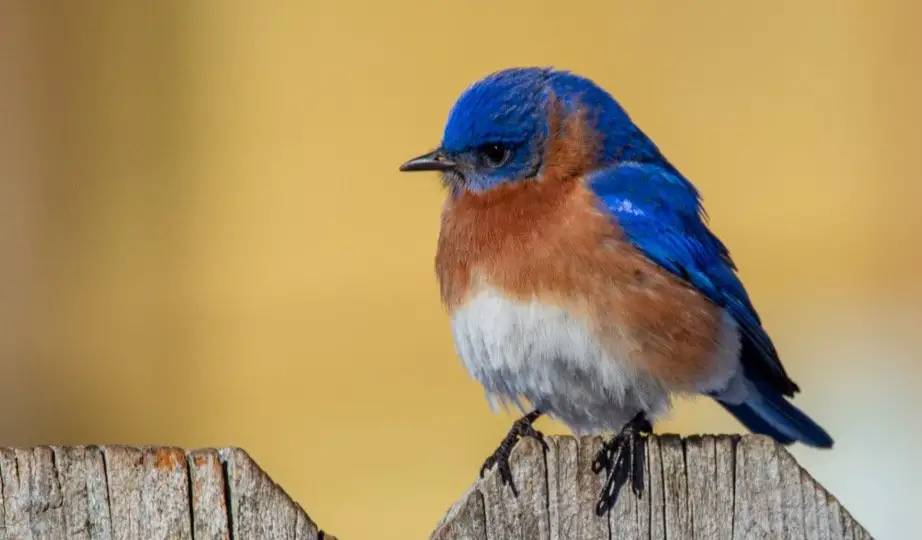
Other Species of Eastern Bluebird
Sialia sialis is the scientific name of the eastern bluebird. The name is derived from a Greek word that means “a type of bird”. Eastern bluebird is further classified into seven subspecies:
- Sialia sialis sialis
- Sialia sialis bermudensis
- Sialia sialis nidificate
- Sialia sialis fulva
- Sialia sialis guatemalae
- Sialia sialis meridoinalis
- Sialia sialis caribaea
Appearance and Behavior of Eastern Bluebird
The length of an average eastern bluebird is about 7 inches and the length of its wingspan is around 9.8 to 12.6 inches. The color of a male bluebird varies from black to pure, bright blue, with the breast of rusty color and white belly.
The beaks of an eastern bluebird are relatively short and legs are also short. The weight of the bird is about an ounce only. Interestingly, the females are larger than male birds and contain duller plumage.
The color of the chicks is brownish-grey and has a tail and wings of blue color. At the time of birth, some spots are present on the breast of chicks that disappear after reaching maturity. While perching, a hunched look appears in the birds.
The juveniles are protected by their mother and also hide from potential predators. The blue color of plumage appears when light strikes on their plumage.
The birds have a protein, which is arranged in their feathers and when it receives light, produces a blue color. Other birds can also create yellow and red light by this method.
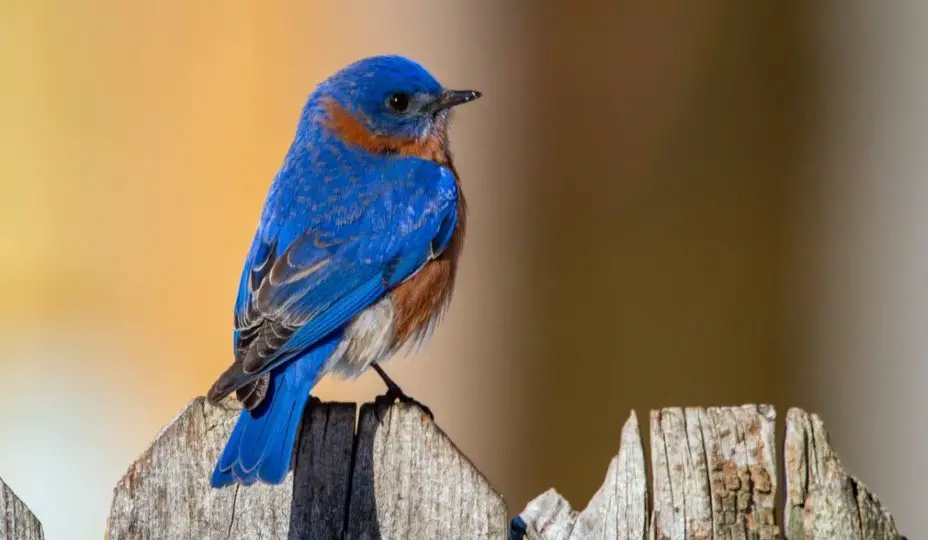
Eastern bluebirds are gregarious birds and the species are also territorial. They claim territories of around one or two acres and defend their territory. During winter, the birds also claim their feeding territory and defend it.
The birds are highly social and prefer to live in flocks. However, they form monogamous pairs during the breeding season but sometimes a male can have more than one mate at a time and it has chicks from two or more birds.
Migration Pattern and Timing of Eastern Bluebird
The species of eastern bluebirds, living in southern parts of their habitats are generally non-migratory. The birds only migrate when sufficient food is not available in their region. During winters, the birds migrate towards southern regions. Some species of bluebirds prefer specific areas such as western Texas and northeast Mexico to migrate during the winter season.
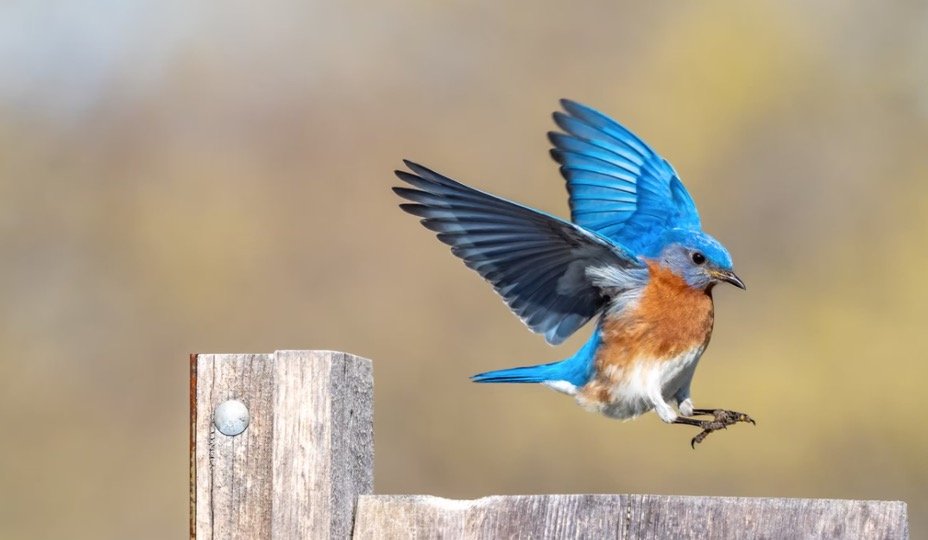
Habitat of Eastern Bluebird
The species is very easy to find and also very conspicuous, thus they are considered as favorites of birdwatchers. The birds can be found in the places where they live year-round and here the birdwatchers can easily spot them.
The bird is found east of the Rockies and as far south as West Palm Beach Florida to as far north as the Cape Cod Peninsula in Massachusetts. The species is very common in their habitats and commonly spotted in fences or telephone wires.
The bird appears as a flash of blue light in the grass and its prey on pests by diving after them. The birds build their nests in pairs during the breeding season and can be spotted easily by birdwatchers while building nests.
They build their nests in a birdhouse or a cavity of an old tree. The birds are also spotted in flocks while heading towards somewhere. The birds can be seen by the people living in the north of the 40th parallel during the spring.
During this season, the birds come to breed. The habitats of a bluebird also include east of the Rockies and Yellowknife in the Northwest Territories, and as the Far East as Nova Scotia.
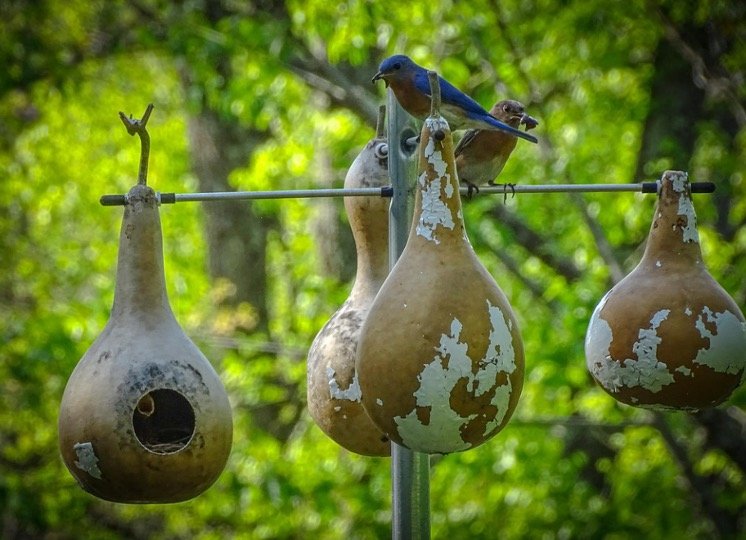
Nest of Eastern Bluebird
The eastern bluebird uses plant materials such as sticks, twigs, grasses, and hair and feathers to build its nest. The female builds a cup-shaped nest.
It is also recommended by ornithologists that some people spread lint obtained from the lint filters and the birds use the lint to build their nest. Generally, a nest is only built by the female bluebird and it takes around 10 days to complete its nest.
Usually, the birds use cavities made by woodpeckers to make their house, or sometimes humans also provide them a house. The birdhouse made for a bluebird should be 2 and 50 feet off the ground.
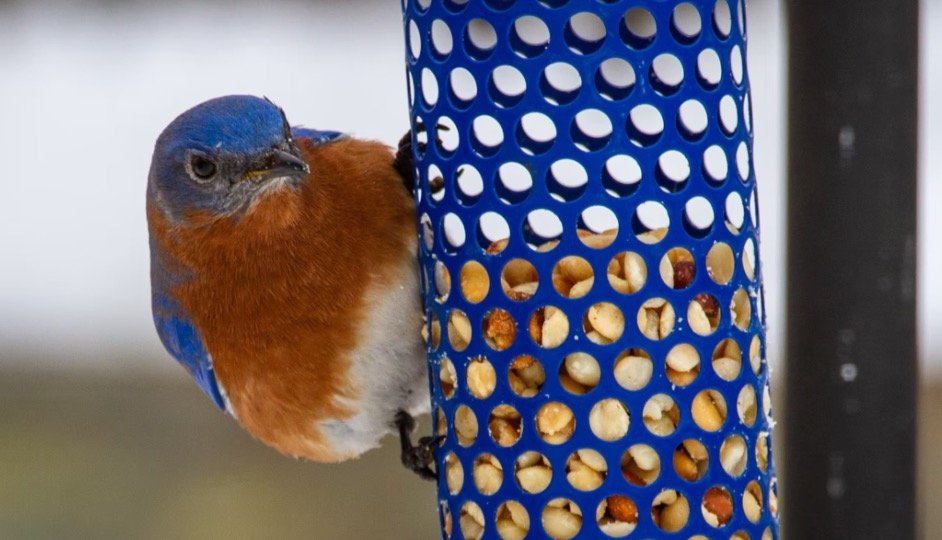
Diet of Eastern Bluebird
It is believed by ornithologists that the eastern bluebird eats insects and other small invertebrates. These organisms made around 68 percent of their diet.
The insects or pests consumed by a bluebird are usually harmful to humans because they cause harm to their crops and plants thus the species are considered beneficial to humans.
During the winter season, the birds eat berries found in the woods because the insects and pests are not available in that condition. The birds can also eat several poisonous berries such as honeysuckle.
However, the birds get affected by the extreme use of poisonous pesticides on vegetation, which is also affecting the population of these birds. The population of eastern bluebirds declined rapidly during the early 20th century.
To drink water and bathe, the bluebird depends upon ponds and streams. Instead of still water, the birds prefer running water, and to do this, a person can set a device in the birdbath.
Predators and Threats of Eastern Bluebird
Many predatory organisms prey upon these small bids. The main predators of an eastern bluebird include chipmunks, raccoons, snakes, flying squirrels, and cats. The eggs of bluebirds are also eaten by these organisms.
When sparrows and starlings become aggressive, they chase the small birds out of their territory. The nestlings of the bird are also threatened by fire ants, who sting them and consume them.
Some other large predatory birds such as owls, hawks, and kestrels eat both adults and young. The birds also die due to cold when they return to their home too early during winters and may freeze there.
Most of the birds die in their first year but the birds have a long life span. Sometimes, the birds also get infected by several diseases such as salmonella, avian pox, and trichomoniasis.
Thus, a person should make sure that the feeders and baths of the bird should be clean to protect them from diseases. Some parasites including lice and blowflies also cause harm to the birds.
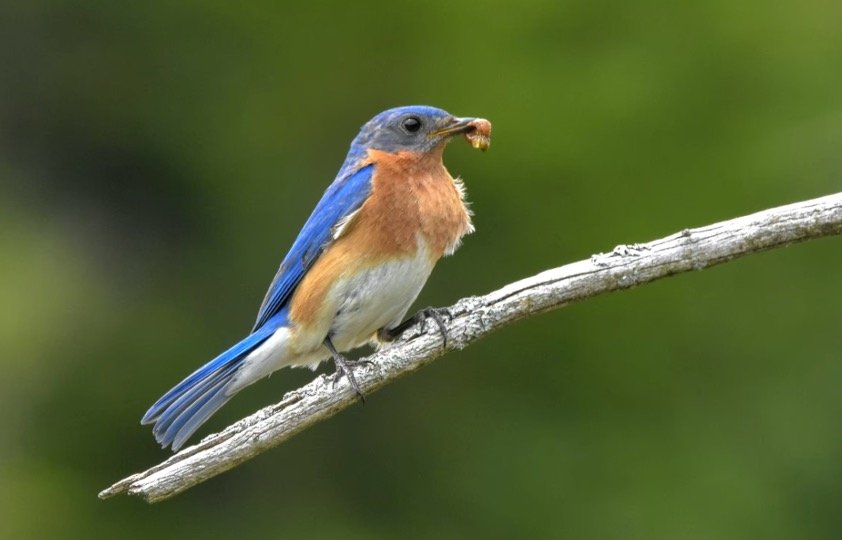
Reproduction, Babies, and Lifespan of Eastern Bluebird
The breeding season of the birds occurs during spring and summer. The birds can produce two or sometimes three broods in a year. After choosing their mate, the male bird chooses a nesting site and then confirms by flapping his wings.
It also tosses some twigs into the cavity. Around three two seven eggs were laid by the female at a time that is blue colored. The incubation period is of two weeks after which the eggs hatch and chicks are produced.
At the time of birth, the chicks are fully dependent on their parents and both the parents feed them. At first, the parent bluebirds feed soft organisms such as earthworms, and when they become stronger, they eat beetles.
After 15 to 20 days, the birds become ready to fly and the birds reach sexual maturity at the age of one year. The average lifespan of an eastern bluebird is six to ten years. The oldest member of the eastern bluebird lived for 10 years and 5 months.
Population of Eastern Bluebird
It is estimated that the population of the eastern bluebird is around 20 million all over the world. The population is still increasing and they have recovered their population very nicely in many places. Thus the eastern bluebird is not considered an endangered species.
